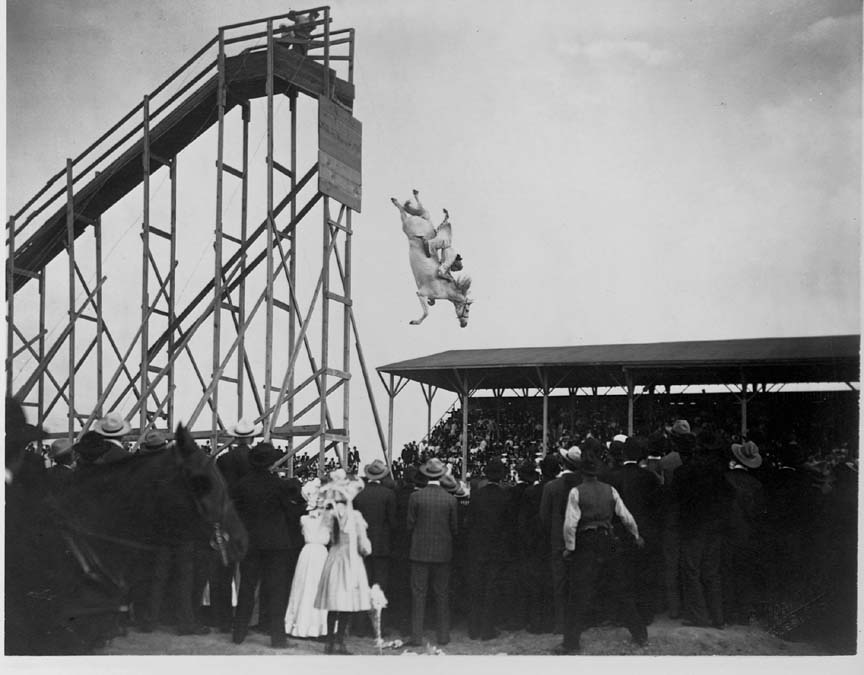More accurately horse and woman diving.
A woman on a horse diving from a high platform into a small pool of water, an act that started in, but outlived, the Wild West Shows.

Buffalo Bill Cody started it all in 1883 and soon followed by several other shows all prominently featuring macho feats of skill and daring.
There were plenty of women performers trick riding, roping and shooting, after all they wanted to sell tickets to men too.
The one that caught my eye was California frank Hafley’s show…
Quote:
|
Hafley’s show heavily featured women in rodeo events like the sharpshooting comedy routine in which Lillian Smith, a former competitor of Annie Oakley’s and Hafley’s first wife, shot targets from the mouth or head of Mamie Francis, Hafley’s second wife.
|
Say what?

Maybe he was a Mormon and they got along.

Quote:
|
Among the most popular performances at Wild West Attractions was a new sport with a dubious connection to the West: horse diving, an event in which a horse and its female rider jumped from a 50-foot tower into a small pool of water. It took more courage than all the other events combined, and only Mamie Francis had the gumption to do it. Between 1908 and 1914, Francis and her Arabian horse Babe completed 628 dives from five stories up a rickety wooden scaffolding.
|

Quote:
|
Indeed, there was great risk in diving into a pool from heights of up to 60 feet on the back of a 1,000-pound wingless animal into a pool of murky water, sometimes at night. Remarkably, both Francis and Webster Carver managed to survive their diving careers more or less intact. Francis once broke an arm when Babe landed on her and nearly drowned in June 1909 when she was pinned underwater, but neither injury stopped her from performing. Webster Carver had a rougher go of it. Eight years into her performances, a dive in which she hit the water with her eyes open resulted in a retinal detachment that blinded her for the rest of her life.
|

Quote:
|
As portrayed in the 1991 film Wild Hearts Can’t Be Broken, against all odds, Webster Carver continued to dive at Atlantic City’s Steel Pier, where the show was permanently installed in 1929, until the age of 38. For their courage, horse-diving women were compensated better than women in most other professions at the time. When she signed on to Carver’s show in 1924, Webster Carver earned $125 per week ($1,800 a week in today’s sums) during the summer, when she would dive up to five times a day — more than eight times what she had been making as a department store bookkeeper in Savannah.
|
link



 Maybe he was a Mormon and they got along.
Maybe he was a Mormon and they got along.


